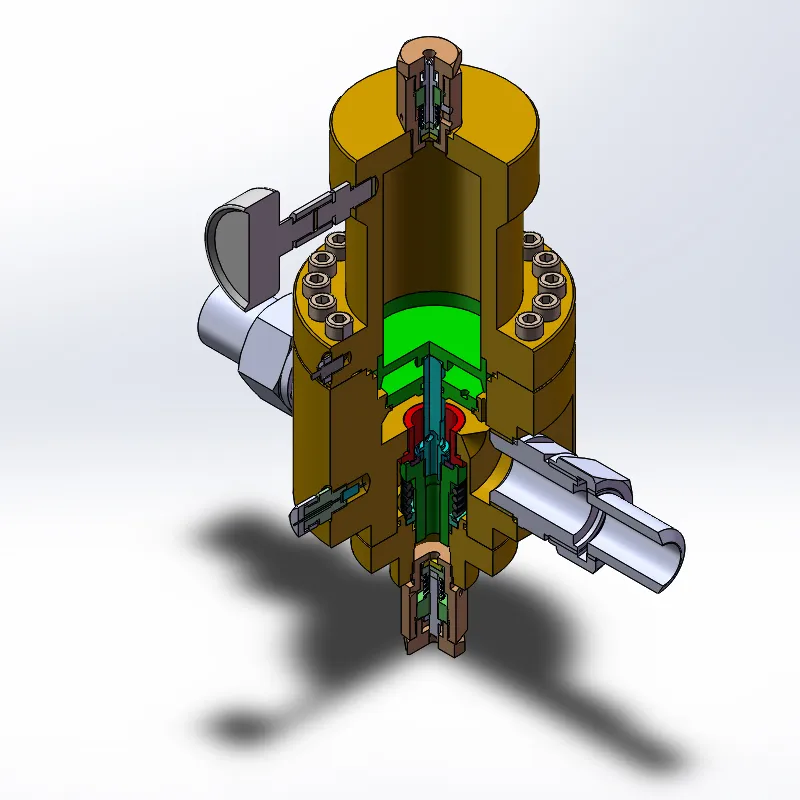
Dec . 04, 2024 16:38
Back to list
pneumatic valve
Understanding Pneumatic Valves Key Components of Fluid Control Systems
Pneumatic valves are essential components in the field of automation and fluid control systems, playing a pivotal role in various industrial applications. These devices are primarily responsible for controlling the flow and direction of compressed air in pneumatic systems, which are widely used in manufacturing processes, packaging, robotics, and many other sectors.
What is a Pneumatic Valve?
A pneumatic valve is a mechanical device that regulates the flow of compressed air or gas. It operates by opening, closing, or partially obstructing pathways for the air to travel through. The main types of pneumatic valves include directional control valves, flow control valves, and pressure control valves, each serving a distinct purpose in controlling pneumatic energy.
1. Directional Control Valves These valves manage the direction in which the air flows in a system. Commonly seen in actuators and cylinders, they can be single-acting or double-acting. Directional control valves are available in several configurations, including 2-way, 3-way, and 4-way, depending on the complexity of the application.
2. Flow Control Valves As the name suggests, these valves control the speed of actuators by regulating the amount of air entering or exiting a cylinder. By adjusting the flow rate, industries can maintain precise control over machine operations, resulting in improved efficiency and reduced wear on components.
3. Pressure Control Valves These valves maintain system pressure within specified limits, which is crucial for protecting pneumatic equipment from damage due to excessive pressure. Pressure control valves can be set to various pressure thresholds, ensuring that operations remain safe and effective.
How Do Pneumatic Valves Work?
Pneumatic valves operate using various mechanisms, depending on their design and application. The most common types utilize solenoid coils to control the opening and closing of the valve. A solenoid control involves an electromagnetic coil that, when energized, creates a magnetic field, pulling a plunger that opens or closes the valve.
pneumatic valve

Alternatively, some pneumatic valves use mechanical actuators such as levers, push buttons, or pilot-operated designs to control airflow. The choice between solenoid and mechanical actuation often depends on factors such as response time, power requirements, and application specifics.
Benefits of Pneumatic Valves
Pneumatic valves offer numerous advantages that contribute to their widespread use in industrial automation
- Speed and Responsiveness Pneumatic systems, including their valves, can operate at high speeds, allowing for rapid actuation of machinery. - Simplicity and Reliability With fewer moving parts and a straightforward design, pneumatic valves are generally easy to maintain and are less prone to failure compared to their hydraulic or electric counterparts. - Cost-Effectiveness Pneumatics are often more affordable than other fluid control systems, making them an attractive option for many businesses.
- Safety Pneumatic systems operate at lower risks of fire or electrical hazards, as they use compressed air instead of fluids or electrical components.
Applications
The versatility of pneumatic valves allows them to be used in various applications. In the manufacturing industry, they play a crucial role in automated assembly lines, controlling actuators and conveying systems. In automotive applications, pneumatic valves are involved in painting, body shop operations, and other assembly processes. Furthermore, the food and beverage industry relies on pneumatic valves for packaging and material handling due to hygiene and safety requirements.
Conclusion
Pneumatic valves are integral to modern industrial and manufacturing processes, providing precise control over airflow and enhancing the efficiency of automated systems. By understanding their functions, types, and advantages, businesses can optimize their operations and harness the full potential of pneumatic technology. As industries continue to evolve, the significance of pneumatic valves will undoubtedly remain crucial in shaping the future of automation and fluid control.
Next:
Latest news
-
Safety Valve Spring-Loaded Design Overpressure ProtectionNewsJul.25,2025
-
Precision Voltage Regulator AC5 Accuracy Grade PerformanceNewsJul.25,2025
-
Natural Gas Pressure Regulating Skid Industrial Pipeline ApplicationsNewsJul.25,2025
-
Natural Gas Filter Stainless Steel Mesh Element DesignNewsJul.25,2025
-
Gas Pressure Regulator Valve Direct-Acting Spring-Loaded DesignNewsJul.25,2025
-
Decompression Equipment Multi-Stage Heat Exchange System DesignNewsJul.25,2025

